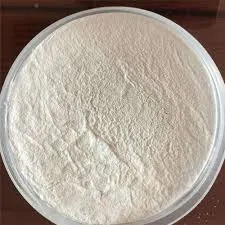
Nov . 18, 2024 16:59 Back to list
Exploring the Various Grades of HPMC for Diverse Applications and Benefits
Understanding the Grades of HPMC An Insight into Hydroxypropyl Methylcellulose
Hydroxypropyl Methylcellulose (HPMC) is a versatile cellulose ether widely used in the pharmaceutical, food, and construction industries. Its unique chemical structure imparts a variety of functional properties, making it an essential ingredient in many applications. One critical aspect of HPMC is its grading, which influences its behavior in different formulations. This article delves into the grades of HPMC, their characteristics, and their implications for various applications.
What is HPMC?
Hydroxypropyl Methylcellulose is a semi-synthetic polymer derived from cellulose, a natural polymer found in plant cell walls. By modifying cellulose through etherification, HPMC is created. The process involves introducing hydroxypropyl and methyl groups to the cellulose molecule, altering its solubility and viscosity. The molecular weight and the degree of substitution (the ratio of hydroxypropyl to methyl groups) can be controlled during the manufacturing process, resulting in different grades of HPMC.
Grades of HPMC
HPMC is classified into different grades based on several factors, including viscosity, hydroxypropyl content, and methyl content. These grades are crucial for determining the performance of HPMC in various applications.
1. Viscosity Grades HPMC is available in a range of viscosity grades, typically denoted by the numerical range of centipoise (cP) that indicates the solution's viscosity when dissolved in water. Common viscosity grades include - Low viscosity (around 1000 cP) - Medium viscosity (up to 4000 cP) - High viscosity (above 4000 cP)
The viscosity grade chosen depends on the specific application. For example, lower viscosity grades are often suitable for applications requiring easy flow, while higher viscosity grades are utilized where thicker consistency is required.
2. Hydroxypropyl Content The hydroxypropyl content in HPMC affects its solubility in water. HPMC grades are classified as having low, medium, or high hydroxypropyl content, generally ranging from 10% to 30%. Higher hydroxypropyl content improves water solubility and creates a thicker gel upon dissolution, making such grades suitable for applications like drug delivery and food formulations.
3. Methyl Content Similar to hydroxypropyl content, the methyl content of HPMC influences its hydrophilicity and thermal stability. A higher methyl content results in lower solubility in water but greater resistance to heat, which can be beneficial in specific applications, such as in hot melt adhesives.
grades of hpmc

Applications of HPMC Grades
The diverse grades of HPMC allow for a wide range of applications
- Pharmaceuticals HPMC is extensively used as a coating agent, binder in tablets, and controlled-release excipient. Different viscosity grades are selected based on the release profile required for the active pharmaceutical ingredient (API).
- Food Industry In food formulations, HPMC serves as a thickener, emulsifier, and stabilizer. The grades chosen depend on the desired texture and mouthfeel of the final product.
- Construction In the construction industry, HPMC is used in cement and tile adhesives. Higher viscosity grades provide improved workability and adhesion properties, ensuring better performance of construction materials.
Choosing the Right Grade of HPMC
Selecting the appropriate grade of HPMC for a specific application requires careful consideration of factors such as desired viscosity, solubility, and compatibility with other ingredients. Testing and formulation trials are often necessary to optimize performance, especially in complex formulations.
Conclusion
Understanding the various grades of Hydroxypropyl Methylcellulose is vital for its effective application across diverse industries. By manipulating the viscosity, hydroxypropyl, and methyl content, manufacturers can tailor HPMC to meet specific requirements, thus enhancing product performance. With continuous advancements in formulation technology, HPMC remains a critical polymer with vast potential in future innovations.
-
Versatile Hpmc Uses in Different Industries
NewsJun.19,2025
-
Redispersible Powder's Role in Enhancing Durability of Construction Products
NewsJun.19,2025
-
Hydroxyethyl Cellulose Applications Driving Green Industrial Processes
NewsJun.19,2025
-
Exploring Different Redispersible Polymer Powder
NewsJun.19,2025
-
Choosing the Right Mortar Bonding Agent
NewsJun.19,2025
-
Applications and Significance of China Hpmc in Modern Industries
NewsJun.19,2025







